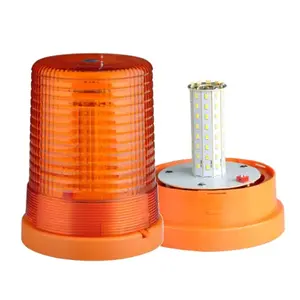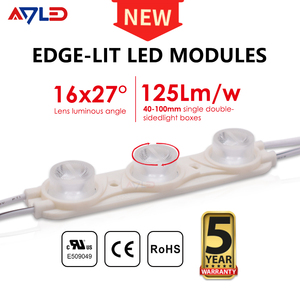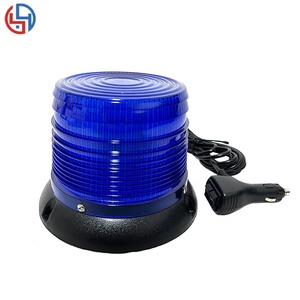(21391 products available)





































































































































 Ready to Ship
Ready to Ship













































































DC 12V LED lights are light-emitting diode lights that operate on 12-volt direct current electricity. The low voltage makes these lights safe and energy-efficient, therefore, ideal for various applications, including residential lighting, automotive, marine, and other commercial uses. The 12V LED lights come in different types, each with unique features and advantages.
LED Strip Lights
LED strip lights, also known as LED tape lights, are flexible circuit boards with light-emitting diodes mounted on the surface. They can be cut into smaller sizes and are designed with adhesive on the back for easy installation. These features make LED strip lights versatile and suitable for various applications such as accent lighting, backlighting, and architectural lighting.
LED Light Bars
LED light bars are linear lighting fixtures with multiple rows of LEDs arranged in a bar shape. They are commonly used for off-road lighting, auxiliary lighting, and general-purpose lighting. The 12V LED light bars offer high brightness and durability, making them suitable for various applications.
LED Downlights
These are recessed lighting fixtures that are installed in a ceiling. They are designed to provide focused, downward illumination and are commonly used for general lighting in residential and commercial settings. LED downlights are available in adjustable and fixed housing, which comes in different sizes and color temperatures.
LED Spotlights
These are LED 12V lights that emit a focused, narrow beam of light. They are designed to highlight specific objects or areas. These spotlights are used for display lighting, architectural lighting, and accent lighting.
LED Floodlights
These are high-intensity LED 12V lights that produce a wide beam of light, illuminating a large area. They are mainly used for outdoor lighting such as security lighting, sports lighting, and event lighting.
LED Panel Lights
LED panel lights are recessed or surface-mounted lights that provide uniform illumination. They are designed for applications requiring bright, even lighting, such as office lighting, commercial lighting, and educational lighting.
RGB LED Lights
These are LED lights that can emit red, green, and blue colors or a combination of these colors. They are used in applications requiring color effects or dynamic lighting, including stage lighting, architectural lighting, and entertainment lighting.
12V LED Bulbs
These are standard LED light bulbs that are designed to fit into regular light fixtures. They provide general illumination and are energy-efficient, making them suitable for indoor and outdoor lighting.
Any business or project using LED lights for illumination must understand the specifications and maintenance requirements of these lights. Here are the details:
Power Consumption
The key selling point of LED lights is their ability to produce light with low energy consumption. The 12V LED lights use 1-20 watts of power depending on the design, making them very energy efficient.
Current Rating
The current rating shows the amount of current the LED light draws from the power supply. Most of these lights have a current rating of 0.02 to 2 ampere. This is a low current rating, which is another reason why these lights are energy efficient.
LED Count
The number of individual LEDs in a light determines the brightness level. For instance, lights with 30-60 individual LEDs will produce brighter light than those with 10-20 individual LEDs.
Wattage
The wattage of a 12-volt LED light affects its brightness. The higher the wattage, the brighter the light. For instance, a 12V LED light with a wattage of 3 watts will emit dimmer light than one with a wattage of 15 watts.
Color Temperature
These LED lights are available in different color temperatures ranging from 2000K-6500K. The color temperature defines the color of light the LED will emit. Warmer colors like 2000K-3000K are ideal for cozy and intimate spaces. While cooler colors like 5000K-6500K are suitable for task lighting and outdoor spaces.
Beam Angle
The LED lights have different beam angles that determine the width of the light they emit. Lights with a wider beam angle (greater than 120 degrees) are suitable for ambient lighting. While those with a narrow beam angle (less than 60 degrees) are ideal for spot lighting.
Regular Inspection
Regular inspection involves checking the LED lights for any signs of damage or wear and tear. This will involve looking at the housing and checking for cracks or breaks. It will also include checking the light output and noticing any changes in brightness or color.
Cleaning
Dust, dirt, and moisture on LED lights reduce their brightness and can damage the housing over time. Therefore, wiping them down regularly will remove all the dust and dirt and improve the lights' performance. A soft cloth or sponge will do the job. For hard-to-remove dirt or stains, a mild cleaning solution can be used.
Replace Worn-out LEDs
The individual LEDs in an LED light can wear out or become dimmer over time. This will affect the brightness level of the light. Therefore, any worn-out LEDs should be replaced to maintain consistent brightness levels.
Check Connections
Loose or damaged connections can cause flickering lights or complete light failure. Therefore, the connections to the power supply and between the individual LEDs should be checked regularly to prevent these issues.
Check for Overheating
Overheating is a common problem with LED lights. It is usually caused by poor ventilation or a fault in the housing of the LED light. Overheating can reduce the lifespan of the LED light significantly. Therefore, the LED lights should be checked for any signs of overheating.
With so many options available, selecting the ideal 12V LED light for a particular project or requirement might be difficult. The following factors should be considered while choosing the best 12V LED light:
Considerations such as lumens, color temperature, housing durability, and extra features should be balanced with the budget. Prioritize what matters most for the project. With careful research, the ideal 12V LED solution that matches any need may be discovered.
Replacing and installing 12V LED lights is an easy DIY-friendly task. Whether installing LED strip lights for TV backlighting or replacing LED lights in an off-grid cabin, below are the steps to follow.
Turn Off Power Supply
Before starting any installations or replacements, it is vital to turn off the power supply. This helps to avoid potential electrical hazards or damage to the lights.
Remove Old Lights (if applicable)
If replacing old lights, the next step is to remove the old lights. Gently disconnect them from the surface they are mounted on. Carefully peel off the adhesive, or use a flat tool to pry them off. Be careful not to damage the underlying surface or the lights themselves. After removing the old lights, the next step is to disconnect the old lights from the power supply. This is done by unplugging any connectors or cutting the adhesive copper strip where the lights were soldered.
Clean the Surface
After removing the old lights, it is important to clean the surface to ensure a good bond for the new lights. Wipe the area with isopropyl alcohol or a mild cleaner to remove dust, residue, and adhesive remnants. Allow the surface to dry completely before proceeding.
Prepare the New Lights
Before installing the new 12V LED lights, it is important to test them to ensure they are working properly. Connect them to the 12V power supply or adapter to verify that the lights turn on and function as expected. Select the desired length of the LED strip lights for the installation. If necessary, use scissors to cut the strip along the marked cut lines. Cutting the strip will ensure that the length fits the specific application.
Connect the New Lights
The process of connecting the new lights is determined by the type of lights being installed. For LED strip lights, remove the protective backing from the adhesive side and press the strip firmly onto the clean surface. Ensure proper alignment and placement. For LED light bulbs, screw the bulbs into the appropriate sockets. Ensure they are securely fastened but not overly tightened.
Connect the LED light to the power supply
For LED light fixtures, follow the manufacturer's instructions to connect the lights to the power supply. This may involve connecting wires or plugs.
Secure the Lights (if applicable)
For some types of LED lights, such as recessed lights or fixtures, additional steps may be required to secure the lights in place. Follow the manufacturer's instructions to ensure proper installation and stability.
Test the Installation
Once the new 12V LED lights are installed, it's essential to double-check all connections and ensure everything is secure. Then, turn on the power supply to test the installation. Verify that the lights function correctly and adjust any settings or angles as desired.
Finish Up
After confirming that the new lights are working as intended, complete any final steps, such as tidying up cables, securing them with clips or adhesive, and ensuring a neat installation.
Q1: What is the difference between 12V and 24V LED Lights?
A1: DC 12V LED lights are low-voltage lights powered by 12 volts direct current. They are safe for use in various settings, including vehicles. On the other hand, 24V LED lights are higher-voltage LED lights that are more powerful and suitable for larger, more extensive lighting installations.
Q2: Are 12V LED lights suitable for indoor use?
A2: Yes, 12V LED lights are suitable for indoor use. They provide adequate lighting and are energy-efficient, making them a great choice for indoor lighting needs.
Q3: Can 12V LED lights be used for outdoor lighting?
A3: Yes, 12V LED lights can be used for outdoor lighting. Outdoor 12V LED lights are available and designed to withstand harsh weather conditions, ensuring durability and longevity.
Q4: Do 12V LED lights require special installation methods?
A4: No, 12V LED lights do not require special installation methods. They can be easily installed using standard wiring methods. Additionally, some 12V LED lights come with plug-and-play options for simple and quick installations.